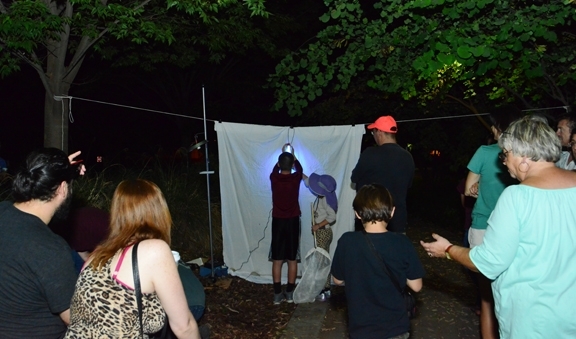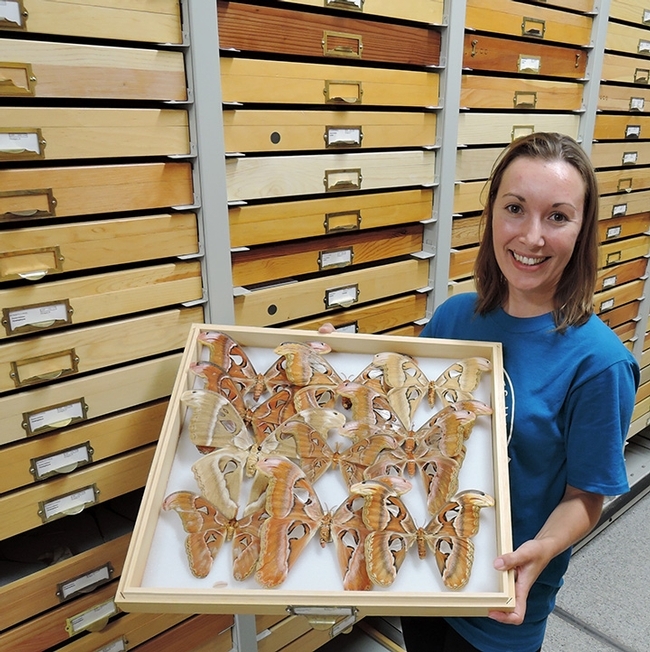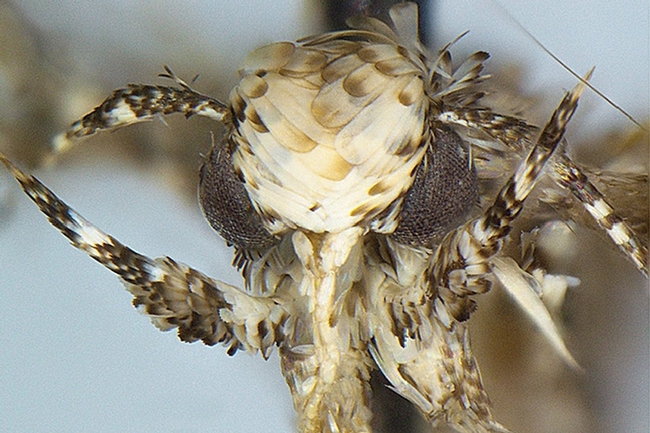
The event, to take place from 8 to 11 p.m. in Room 1124 of the Academic Surge Building on Crocker Lane, is free and open to the public. The blacklighting demonstration will occur after sundown.
National Moth Week, set July 22-30, celebrates the beauty, life cycles, and habitats of moths.
Bohart Museum scientists will be on hand to discuss moths and answer questions. They include Bohart associate and entomologist Jeff Smith of Sacramento, who curates the moth and butterfly specimens. Also expected: "Moth Man" John DeBenedictis of Davis and Bohart senior museum scientist Steve Heydon who traditionally set up the blacklighting sysem and identify the insects.
The Trump moth, Neopalpa donaldtrumpi, is a relatively new species that Bohart Museum scientists collected at Algodones Dunes, bordering Arizona and the Mexican state of Baja California. Evolutionary biologist and systematist Vazrick Nazari of Canada named it donaldtrumpi because the yellow scales on the tiny moth's head reminded him of the hairstyle of Donald Trump, then president-elect. The orange-yellow moth has a wingspan of less than one centimeter.
Nazari published the piece on the Trump moth Jan. 17, 2016 in the journal Zookeys and explained the name: “The reason for this choice of names is to bring wider public attention to the need to continue protecting fragile habitats in the U.S. that still contain many undescribed species."
The Neopalpa donaldtrumpi belongs to the family, Gelechiidae of the Lepidoptera order.
Three Trump moths were collected in a Malaise trap in one of the washes on the east side of the dunes. In a contract with the U.S. Bureau of Land Management, the Bohart scientists have collected nearly 2,000 species of insects from about 200 square miles of sand, according to Lynn Kimsey, director of the Bohart Museum of Entomology and professor of entomology at UC Davis. Some six percent are new to science.
Of the Trump moths collected, Nazari kept one in Canada, the norm--but the holotype, the one he determined as the standard for the species--is a permanent part of the Boohart, said Tabatha Yang, education and outreach coordinator.
Naming species for people--from citizens to celebrities to presidents to other public figures--is common. President Barack Obama has nine species named for him (more than any other president). His namesakes include a long-legged, resourceful Northern California spider, Aptostichus barackobamai, and a colorful spangled darner, a perchlike fish, Etheostoma obama.
The Bohart Museum offers a biolegacy program in which donors can select a species for naming, and receive a framed photo and documentation (publication). The Bohart Museum scientists describe as many as 15 new species annually, and their associates, "many more," Kimsey says.
For more information on the open house or the Bohart's biolegacy program, email bmuseum@ucdavis.edu or call (530) 752-0493.
Attached Images:

